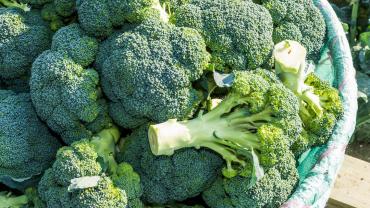
Liver detoxification is a two-phase process essential for overall health in removing toxins from the body. It mobilizes exogenous and endogenous toxicants to undergo biotransformation and elimination through complex pathways. Both phases I and II liver detoxifications must be optimally functioning and balanced with the assistance of healthy lifestyle habits and a myriad of required, supportive nutrients.
Various macronutrients and micronutrients are required for proper phase I detoxification performed by a group of enzymes called cytochrome P450 (P450). The P450 enzymes transform lipid-soluble toxicants into more polar, less lipid-soluble forms through oxidation, reduction, hydrolysis, hydration, and dehalogenation reactions.
The activity of P450 enzymes varies per person and can depend on disease states, genetics, and drug-nutrient interactions. It is widely accepted that the variability in the number of P450 enzymes may influence how an individual responds to a toxin. The activity of P450 enzymes also depends on the nutrigenomic and epigenetic influence of high-quality, bioavailable proteins, carbohydrates, fats, phytonutrients, and botanicals.
Various food sources have been studied in vivo and clinically to support phase I detoxification. The most well-known foods that directly induce P450 enzymes with antioxidant properties and help with the successful removal of toxins through their fiber content are cruciferous vegetables, such as broccoli, kale, Bok choy, watercress, and cauliflower. Certain foods may upregulate or inhibit P450 enzyme activity, working to favorably balance phase I to phase II metabolic pathways. For instance, grapefruit is a well-known P450 enzyme inhibitor. Depending on the serving size, many foods may both upregulate or inhibit phase I enzymes and are commonly referred to as bifunctional modulators.
More research is needed, however, clinical findings suggest the potential benefits of the following foods for phase I detoxification: resveratrol in grapes, wine, peanuts, and soy; apiaceous vegetables, such as carrots, celery, parsley, and parsnips; and quercetin in apples, blueberries, and yellow onions. In vivo studies demonstrate that green tea, black tea, curcumin, garlic, fish oil, astaxanthin, rosemary, chamomile, peppermint, dandelion, and more may favorably influence phase I detoxification. The nutritional cofactors that support phase I detoxification are riboflavin, niacin, vitamin B6, folate, vitamin B12, glutathione, flavonoids, phospholipids, and branched-chain amino acids (i.e., leucine, isoleucine, and valine).
The biotransformation in phase I detoxification creates reactive oxygen species (ROS) by-products. Therefore, it is paramount to have optimal antioxidant status to help quench the ROS and attenuate oxidative stress. Examples of food sources or nutrients with potent antioxidant properties are glutathione, carotenes, ascorbic acid, vitamin E, selenium, copper, zinc, manganese, bioflavonoids, milk thistle, N-acetyl-L-cysteine, green tea, and various polyphenols.
Every individual should develop and maintain a diet that supports liver detoxification for overall health. A person’s exposure, accumulation, and removal of toxins may be associated with the risk of chronic diseases, such as cardiovascular disease and type 2 diabetes. Nutritional strategies should favor a high-quality, mixed, varied whole foods diet and can be complemented with supplements to help balance phase I and II detoxification pathways and promote the overall metabolic detoxification process.
By Danielle Moyer, MS, CNS, LDN